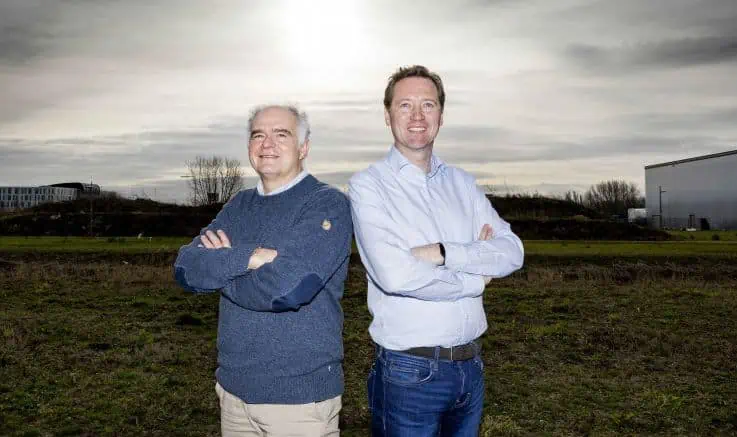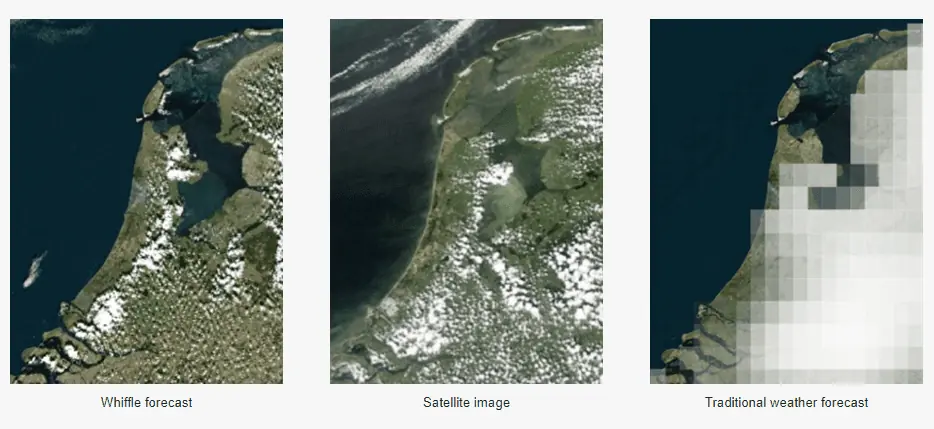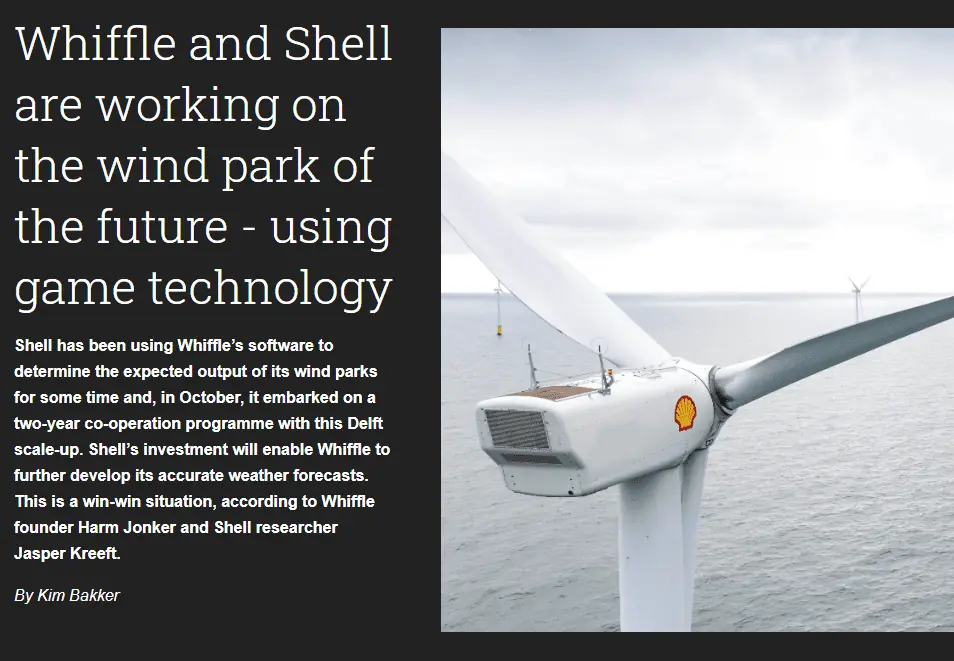This year, almost seventy wind turbines have to be built in the new Hollandse Kust Noord wind park, which is situated more than eighteen kilometres off the coast of Egmond aan Zee. Shell, the owner, who is building them together with Eneco, knows exactly what a meticulous business that is. The turbines must, for example, be located at exactly the right distance from one another and they must face the right direction at the right time. It is, literally, essential that Shell and Eneco know ‘which way the wind blows’.
To this end, Shell sought the help of Whiffle, set up in 2015 by Harm Jonker and Remco Verzijlbergh. Whiffle uses smart technology from the gaming world to produce unbeatably accurate weather predictions. This is not only important before construction starts but also when the wind park is ready for use. Decisions about when to purchase additional electricity from gas-fired power plants, for example, can be better planned if the output of the turbines can be very accurately predicted.

Blocks of fifty by fifty metres
All environmental factors are incorporated into Whiffle’s software: cloud cover, precipitation and even buildings. Jonker who, besides being Whiffle’s owner, is Professor of Atmospheric Physics at TU Delft: “We do not make any assumptions at all. Everything is calculated. We can determine the weather forecast in blocks of fifty by fifty metres. Most weather models can only predict the weather to an accuracy of ten kilometres.”
The difference between most weather models and Whiffle is that the latter programs its simulations as game graphics. Jonker: “Calculation on video cards normally used for gaming gives us extra calculating power and enables us to make simulations in real time. We used to send our data to the supercomputer in Amsterdam so it took a couple of days before you could make the simulation – and it was much less accurate into the bargain.”
Whereas most weather models have an accuracy of ten kilometres, Whiffle can determine the weather forecast in blocks of fifty by fifty metres.

Wind turbines at virtual locations
Thanks to Whiffle’s unique approach, Shell can accurately calculate what the weather conditions in its wind parks are and their effect on the output. The wind division received a new impulse in 2016, says Jasper Kreeft, who works on the optimisation of wind parks at Shell. He and his colleagues have been using Whiffle’s software for the last two years for this purpose. The software can, for example, be used to clarify how the wind behaves at a specific wind park location and its effect on wind turbines at virtual locations. The optimum position of the turbines can be determined in this way.
Special attention is paid to wake effects. Kreeft: “The rotors of a wind turbine displace the wind. The wind speed behind them is therefore lower and this is known as the ‘wake effect’. You can imagine that it is not very efficient to have a wind turbine turning at such a location. Simulations reveal effects like this.”
Furthermore, once a well-conditioned and well-configured wind park is ultimately up and running, thanks to Whiffle, an energy dealer such as Shell Energy (Ed.: Shell’s energy supplier for private individuals) has a better picture of the weather conditions in the immediate future, Jonker explains. “Tomorrow’s energy has already been traded today; that is always the case. But it is possible to estimate things incorrectly. You might count on a good output on a particular day but it turns out that there is hardly any wind that day. It is very expensive if gas-fired power plants have to be fired up at that point. It would have been cheaper if you had known beforehand.”

Triangular cooperation
The software from the Delft-based company suits Shell very well. So well in fact that, in October, the company got its own licence and embarked on a two-year co-operation programme with Whiffle. Kreeft: “Not only did we want to use the product, we also wanted to help Whiffle improve it. That helps us too, in the long term.” The two companies jointly agreed on a number of research themes. Kreeft mentions solar energy as an example: “In the future, we want to lay floating solar panels between the wind turbines. Won’t it be wonderful if we can incorporate wind as well as solar energy in a simulation? Whiffle’s software is suitable for doing this.”
TU Delft is involved in the co-operation via both companies. Whiffle started as an offshoot of the university and it was able to kick off thanks to shareholder Delft Enterprises B.V.. Jonker still works at the university one day a week and so does cofounder Remco Verzijlbergh. The young company is located at the campus: formerly at YES!Delft and currently at NEXT. Students, PhD students and postdoctoral researchers at Delft can apply to the company for research positions.
The ties between the university and Shell go back to before the Second World War. Shell has traditionally invested in research into the petrochemical industry. Another major project focuses on the new Hollandse Kust Noord wind farm. This research focuses primarily on control technology, says Kreeft. “It concentrates on the regulation and control of every turbine. The output of the turbines and Whiffle’s software come together here.”
Push
Although Shell’s investments in solar and wind are growing, the multinational is also still pouring billions into tapping new oil and gas reserves. Is it up to companies like Whiffle, with sustainability deep in its DNA, to push the proverbial oil tanker Shell in the energy transition? Jonker: “I think that we need big players such as Shell in the energy transition, whether we like it or not. What I hope is that we will make it easier for Shell to build wind parks more and more cheaply so that eventually it will no longer be profitable to use oil and gas because these fossil fuels will simply lose the fight against the wind and the sun.”
Bron: Pioneer Tech Tu Delft
